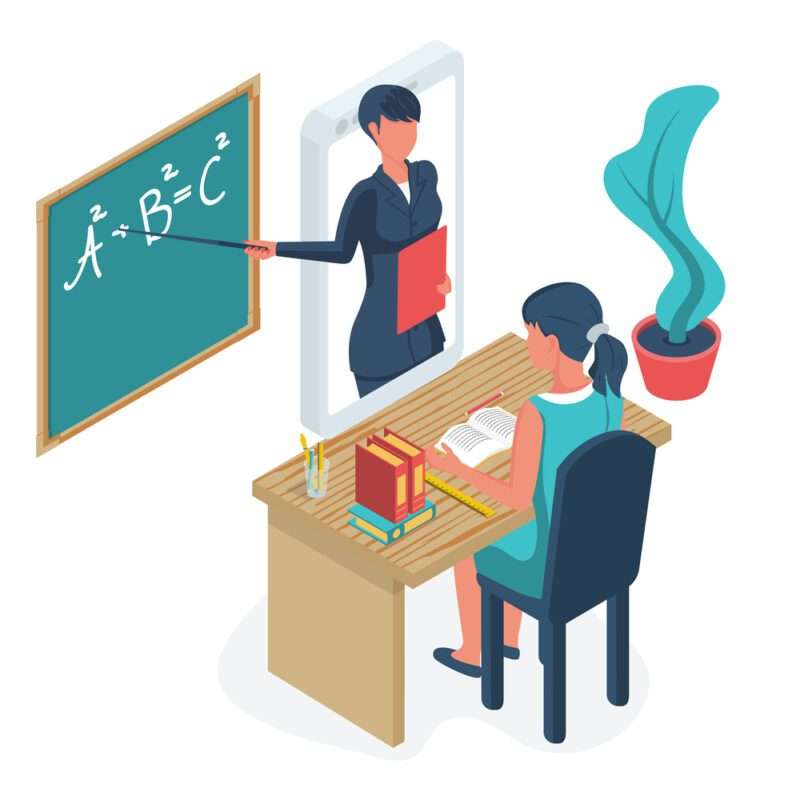I encourage you to personally tour the school and meet the educators and students, form your own opinion and leave a comment here.
Best of luck with your search for the perfect school!
When an astrophysicist meets an engineer
What happens when an astrophysicist-turned-teacher meets an engineer-turned-teacher? When both parties have glittering corporate and research careers but a passion to educate?
Turns out a visionary math program is created.
Astrophysicist and engineer turned teachers
Co-Founders of Maths Pathway – Richard Wilson and Justin Matthys – met while they were both becoming teachers with the program Teach For Australia.



Teach For Australia is a not-for-profit organisation that aims to improve equity in education for children in disadvantaged communities around Australia. They do this by approaching people already established in their careers to retrain into teachers. These teachers are then placed in low socioeconomic status communities to teach as well as act as role models and mentors to improve outcomes for disadvantaged students.
Richard has an engineering degree, had start-up experience and was working in a corporate career when he felt inspired to teach.
Justin was an astrophysicist, a member of the physics research group that discovered the famous Higgs Boson. Incredibly, Justin turned down a PhD opportunity in Switzerland to become a secondary school teacher.
Both gave up successful, established careers in their respective fields to career change and follow their shared passion for education, gaining their teaching qualifications at Teach For Australia.
Enjoying this article? See our related articles:
The problem with personalisation
Richard first observed the transformative effect of personalisation during a history class. He witnessed previously disengaged and disruptive students transform into keen learners when the content and level was aimed correctly.
“When it’s the right content and aimed at the right level, you see a transformation in the kids in their level of engagement. Students like to feel like they’re doing well, so the content has to be the right content at the right level, not too hard and not too easy.”
The problem with personalisation in the classroom is that teachers must cater to, not only different levels of a subject, but also different strengths and weaknesses of each student.
“A typical year 7 maths class will have students who are at year 4 level maths right up to capable of year 10 maths. Not only that, some students may be weaker in certain areas of maths like fractions or statistics and stronger in others. For a teacher to be able to diagnose exactly where each student is at and then prescribe the right content at the right level for them, and also keep track of progress, is almost impossible.”


Richard thinks the education system was created for another time when not all children went to school and education was for a privileged few. A time when it was acceptable that one set of content was taught to all students of the same age at the same time.
Now that education is compulsory for the masses, he says students, even of the same age, have a much wider variation in ability and the system is not catering for that.
Teachers can and do personalise learning to students in classrooms, however even for the best teachers, it is not an easy task to cater individually for 25-30 students per class.
Because of the amount of work involved, Richard believes this contributes to the topical problem of teacher burnout and thus teacher shortages around Australia.
The creation of Maths Pathway
Thus, the problem was defined – how to help teachers in the classroom to:
- Assess students for strengths, weaknesses and gaps in knowledge
- Then provide the right content at the right level
- Then assess afterwards to confirm mastery of the topic before moving onto the next topic


The solution came when Richard met Justin at a Teach For Australia conference. Both recognised the problem and between them, had the skill sets to create a small maths program to be carried out in the classroom. Although the problem of personalisation was recognised in history and other classroom subjects, the subject of maths was chosen because it is a foundational subject and “many people are afraid of maths”.
The program, initially developed for use in their own classrooms, began being used in schools in 2014. Initially starting at 7 schools and run out of Richard’s garden shed, Maths Pathway is now used in over 300 schools around Australia to personalise maths for students in the classroom.
How Maths Pathway is different
I asked how it differs from other maths programs that are available to students, teachers and parents:
Richard says “I have no problem saying that Maths Pathway is the best maths program in Australia, if not the world. We have spent over $10 million dollars in just content. There are many maths programs out there, but to teach well, the content must be high quality and also structured and complete.”
Maths Pathway is certified by Education Alliance Finland ( EAF ) which offers a comprehensive EdTech impact certification based on best practice pedagogical knowledge. Global EdTech industry participants use EAF’s services to ensure their products are independently certified to international standards.


Maths Pathway is also a certified B-Corp. B-Corps are are businesses that meet high standards of social and environmental performance, accountability, and transparency. They envision a better economic system where businesses can benefit people, communities, and the planet and measure their success based on the positive impact they create.
“We’re also a B-Corp which ties us to our ethics and our vision. We value education over making money.”
The creation of Reflective Learning
Reflective Learning is the use at home version of Maths Pathway. It is a program designed for year 5 to year 9 students to use at home without input from parents or teachers.
Although going by a different name, the same Maths Pathway team is behind Reflective Learning.
Reflective Learning shares the same structure and is based on the same principles of Maths Pathway:
- Assess for areas of weakness and gaps in knowledge
- Deliver the right content at the right level in the right sequence
- Assess for mastery before moving on


Richard believes that although there are many online programs for maths advertised to parents, not all are of the same quality and students benefit from a high quality program.
One difference is that the co-founders of Reflective Learning and Maths Pathway are local and not a big tech company. The target market is Australian and so is the team behind the program. The content is aligned with the Australian curriculum and they are small enough to be open to feedback and nimble enough implement changes.
What does the future hold for Maths Pathway and Reflective Learning?
Our mission is to help every kid across the country close learning gaps and get excited about learning. We’ve got plans about how we’d like to get there, but we also lean into our amazing community of parents and teachers who are constantly helping us improve our programs and spread the word about us.
Reflective Learning offers two weeks free trial for new users. Melbourne School Facebook Group members also receive 10% off subscriptions with the code: MELBSCHOOLS.
* Reflective Learning is a sponsor of Melbourne Schools. Learn more about them here *
Enjoying this article? See our related articles:
